Application defects in paint coatings are among the most common problems faced by both professional and amateur painters. They arise at various stages of painting work and can have various causes, most often related to non-compliance with technological process rules, poor environmental conditions, or inappropriate application techniques.
COATING DEFECTS – application failures
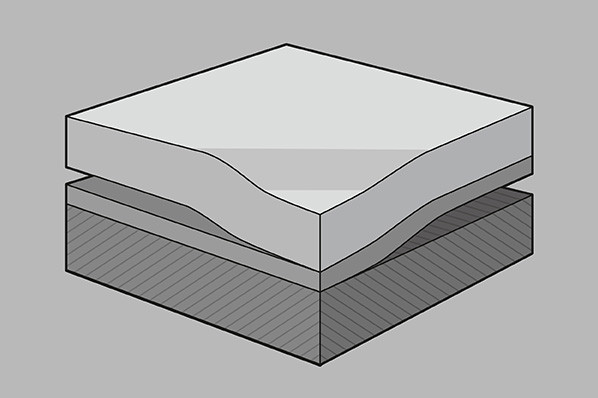
Flaking and peeling
Occurrence: Lack of adhesion of the coating to the substrate or of individual coats to each other (poor inter-coat adhesion).
Causes:
- Insufficient cleaning of the substrate from silicone, oil, wax, rust, etc.
- Inadequate surface preparation
- Using wrong primer
- Too thin layer of primer and/or topcoat
- Coating too thick
- Inter-coat drying time too short
Prevention:
- Thoroughly clean and prepare the surface before painting
- Use well-matched primers
- Observe the product application parameters specified in the technical data sheets.
- Apply coatings of sufficient thickness
Removal: Remove the coating from an area slightly larger than the one with the defect. Recoat.
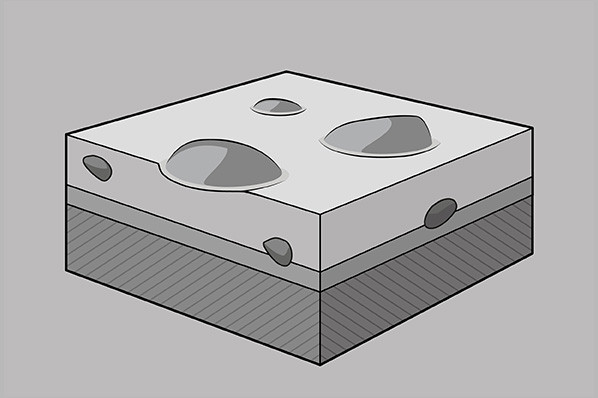
Contamination
Occurrence: The application of contaminants of various sizes, present in the paint, equipment or in the air.
Causes:
- Surface not thoroughly cleaned after sanding
- Dirty tools, clothing, room
- Dirty filters, installation
- Incorrectly adjusted pressuret
Prevention:
- Keeping equipment, clothing and premises clean
- Maintaining cleanliness of parts to be painted
Removal: Sand the soiled areas with P1200 paper and polish with polishing paste. Larger dust particles should be sanded off and repainted from scratch.
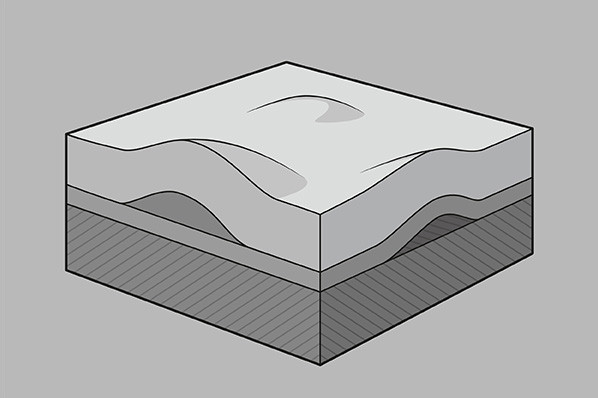
Blistering
Occurrence: Blisters of various sizes, distributions and forms found on the surface of the topcoat. They can occur between the substrate and the coating as well as between coats.
Causes:
- Incomplete cleaning of the surface to be painted
- Contamination with salt compounds from dirty water (wet running)
- Dirt that has not been filtered out
- Wet sanding of polyester putty without adequate evaporation time
- Inadequate coating thickness
Prevention:
-
Thorough washing of components before painting
- Machine sanding (elimination of water absorption by the coating)
- Dry sand polyester products or leave extra time for water to evaporate in wet sanding
- Apply a coating of appropriate thickness
Removal: Remove the coating. Recoat with primer and topcoat.
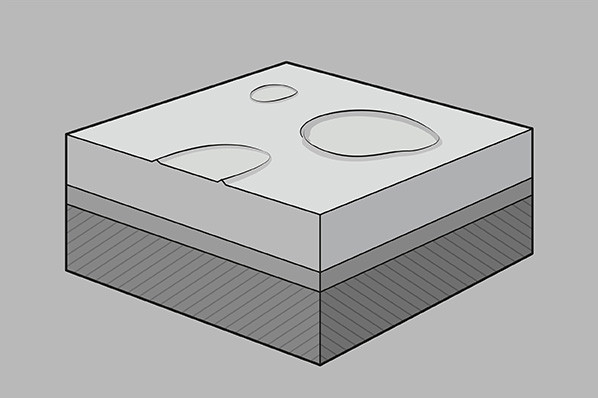
Water stains
Occurrence: Rounded spots on the paintwork.
Causes:
- Water contaminants in the installation
- Excessive air humidity (e.g. from pouring water on the floor).
Prevention:
-
Respecting correct drying time
-
Drying wet parts before painting
Removal: Wipe wet areas, polish with polishing paste. If this does not work, sand the surface with P800 and apply a refinish coat.
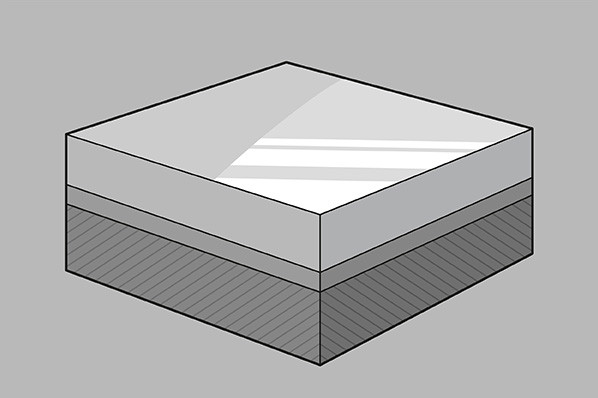
Dull Finish
Occurrence: Dull areas visible on the paintwork
Causes:
- Insufficiently cured paint exposed to atmospheric moisture
- Too thick paint coat
- Air humidity too high during painting
- Sensitivity of the substrate to solvents
- Inappropriate amount of hardener
- Expired or soggy hardener
- Interruption or failure of the drying process
- Use of drying and curing accelerators
- Insufficient air circulation during drying
Prevention:
- Carefully close hardener containers
- Observe recommended layer thicknesses
- Observe recommended mixing ratios
- Observe set drying times
Removal: Matt and polish or sand and repaint.Dull Finish
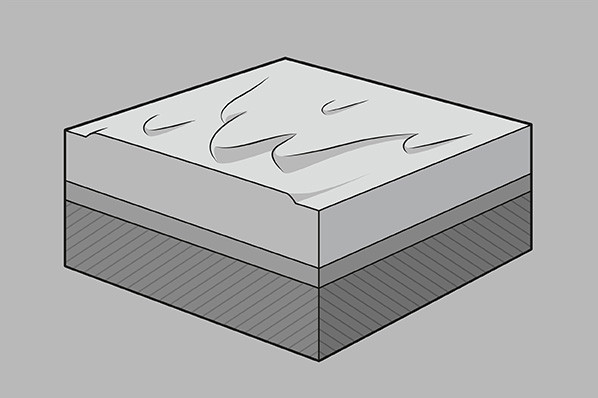
Runs & Sags
Occurrence: Excessive amount of paint that runs down the panel.
Causes:
- Inappropriate choice of paint materials for the application conditions (thinners too slow)
- Too low paint viscosity
- Paint or object too cold
- Too thick coat
- Drying time too short
- Gun held too close to the surface or moved too slow
- Gun nozzle diameter too large
Prevention: Use the correct materials in accordance with the manufacturer's recommended technology
Removal: Small sags can be removed by sanding with P1000-P1200 paper and polishing with polishing paste. If there are large patches, the entire coatings should be removed and reapplied
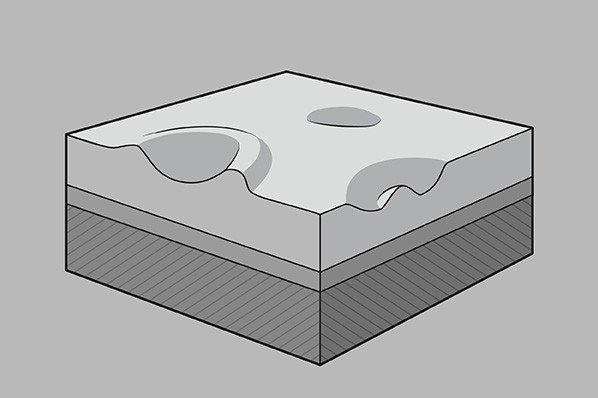
Craters (fish eyes)
Occurrence: Small craters or depressions in the coating with a diameter of 0.5 to 3 mm
Causes:
- Oils, grease, wax, silicone left on the surface
- Contamination of spraying equipment
- Silicone contamination from installations
Prevention:
- Clean the surface thoroughly using a degreasing agent
- Do not use silicone products in the paint shop
- Clean compressor regularly
Removal: Sand off the affected area and recoat it.
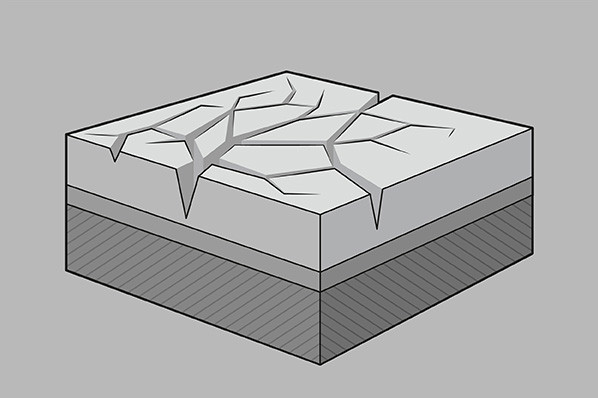
Cracking
Occurrence: Cracks of various lengths and widths occurring directly in the surface layer
Causes: Significant changes in temperature and conditions during the course of work
Prevention:
- Avoid sudden changes in environmental conditions
- Sand with appropriately graded paper, use suitable primers and undercoats and adhere to mixing ratios
Removal: Sand off the damage and then apply the varnish.
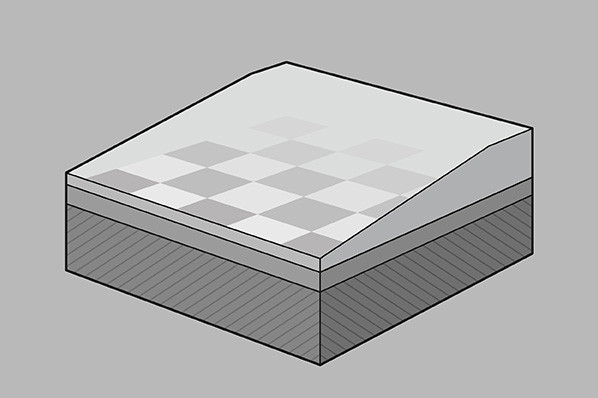
Poor coverage
Occurrence: Insufficient coverage - the substrate is visible through the topcoat layer.
Causes:
- Insufficient mixing of topcoat before spraying
- Topcoat layer sprayed too thin
- The varnish used has uneven pigmentation
- Using the wrong diluent or using too much diluent
Prevention:
- Spray a neutral primer
- Observe the recommended layer thickness
- Avoid using too much thinner Mix the varnish thoroughly before application
Removal: Sand with P 800/P 1000 after drying and recoat